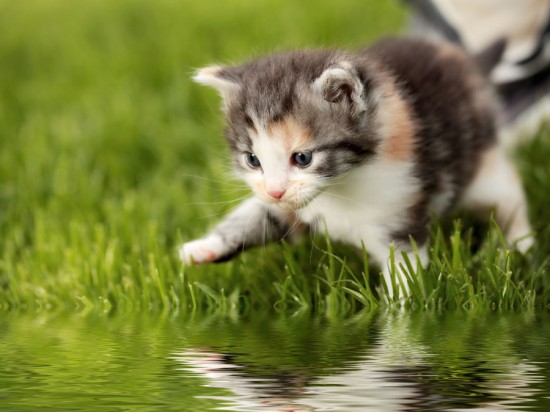
The evolution of the Archimedes screw to Ericson's propeller in 1861, then into the Kaplan generator in 1913 was a huge success for engineering and a huge disaster for Salmon. However, Smith in 1839 proved that a long screw takes larger amounts of energy to drive than a short screw propeller. Engineering the reverse, if driven by water flow in a generator, the same screw will deliver larger amounts of energy to the generator than a short screw. Since that energy is the kinetic energy, removing energy slows down the water and the resulting velocity barrier which prevents fish passage upstream, thus making a full screw generator an ecotechnology innovation for sustainable engineering.
Turbulence at the tailrace of Kaplan generators indicates wasted energy. High velocity flows create differential mixing turbulence which can be partly resolved by reducing turbine exit water velocity with a long screw design.
The mortal striking of fish by high speed blades can be eliminated if these structures are eliminated and the turbine slowed. By eliminating all occlusive structures except the blade then reducing the number of blades and significantly reducing their rotational speed eliminates fish strike.
With such a screw design, specifications of diameter, length and blade pitch can be ordered as needed for the head of the dam to allow for a very slow blade rotation eliminating fish strikes, but, there is concern with a support structure attaching to the center cylinder used for bearing supports. A design using the outer member of the screw as the inner member of the bearing eliminates this concern. There would be no edges or supports for salmon to hit other than the leading edge of a slow moving blade which is not a biologically significant risk.
This specific flow through design eliminates components that injure fish such as stay vanes, wicket gates, and draft tube piers, coupled with reduced rotational speed and water velocity will reduce damage to fish effectively to zero.
In attempting to correct past problems with generators, novel solution have started to devolve the generator back to a true Archimedes screw.
In the Kaplan Generator, the blade is simply a truncated screw turbine, so, to devolve this into a more fish friendly design, Alden Research Labs merely extended the blade back into a screw like design, but the double pitch design reduced efficiency, but did significantly reduce downstream kill rates. Proper pitch of blades in a full screw resolves this issue.
Bard's Kaplan proved horizontal generation is functional and efficient in light of Newton's laws of motion. Red Bluff Diversion Dam tests proved the fish friendliness of water screws used as fish passage devices.
A long screw design allows for more energy removal, eliminating the velocity barrier and increasing efficiency. The turbine devolution of the propeller must go back to a full Archimedes screw design to be effective at generation and bidirectional fish passage resolving the fish/dam conflict.
US Patent 6741000 "Electro-magnetic Archimedean screw motor-generator" http://salmongenerator.com lays out these same arguments with images. The author, former Adj. Prof. Ronald A. Newcomb, SDSU College of Sciences, can be reached at (619) 501-1800 and is currently president of Marine System Inspection LLC
 Peach Faced Lovebird
Peach Faced Loveb
Peach Faced Lovebird
Peach Faced Loveb
 Introducing Your New Kitten To The Outside World
Introducing Your
Introducing Your New Kitten To The Outside World
Introducing Your
 Im Not Buying This! Mr Hale Said I Should Join Up So,,,
here goes,
Clancy is a friend of mine who writes here
Im Not Buying This! Mr Hale Said I Should Join Up So,,,
here goes,
Clancy is a friend of mine who writes here
 Signs Youre Family Might Be Ready To Adopt Or Buy A Dog
Signs Youre Famil
Signs Youre Family Might Be Ready To Adopt Or Buy A Dog
Signs Youre Famil
 Five Universal Personality Traits Of The Siamese Cat
Five Universal Pe
Five Universal Personality Traits Of The Siamese Cat
Five Universal Pe
Copyright © 2005-2016 Pet Information All Rights Reserved
Contact us: www162date@outlook.com